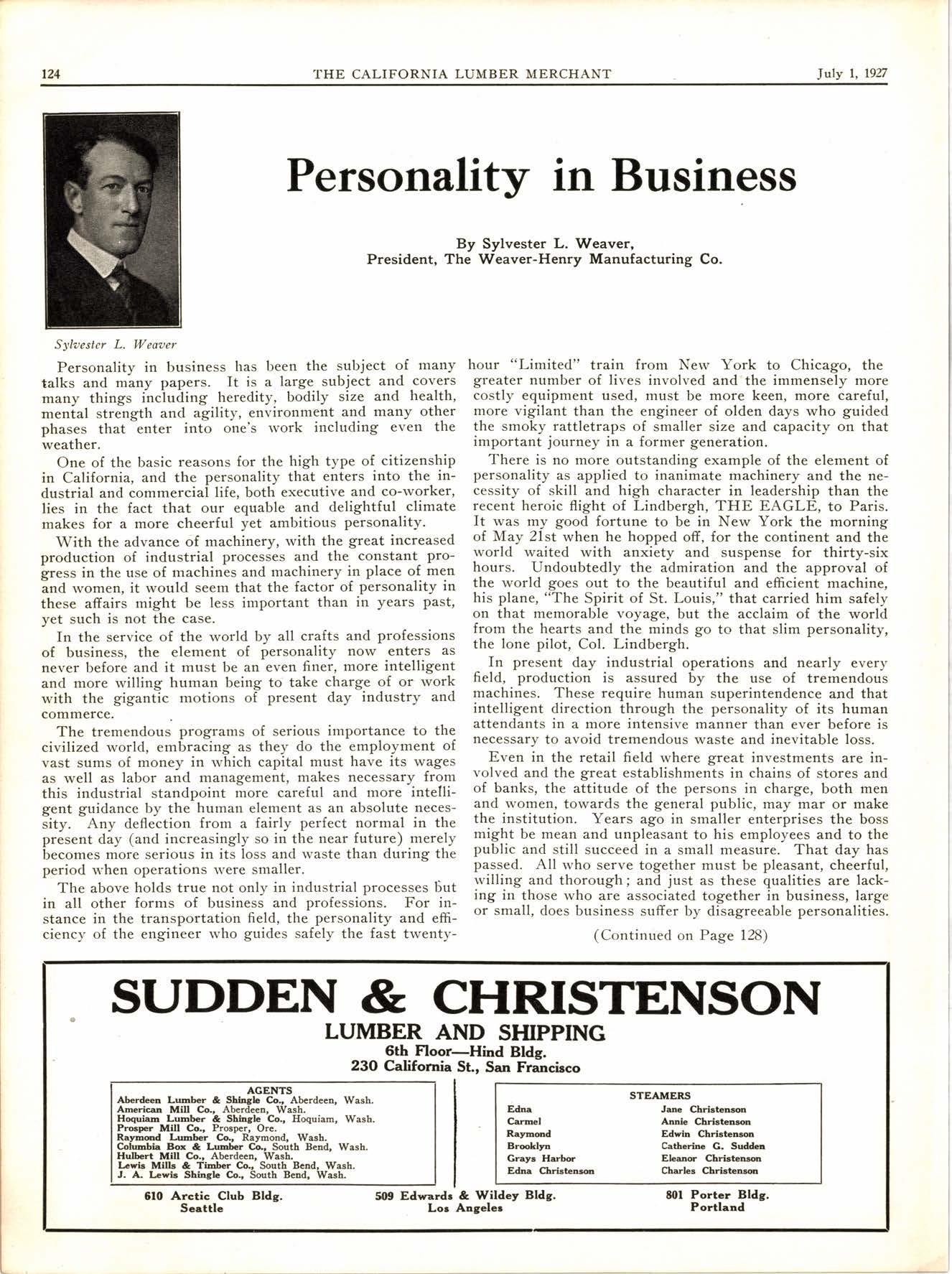
1 minute read
eles' ber Harbor
by airplane, gives a very comprehensive idea of what a monster industry this has grown to be. Huge yards, docks, storehouses, miles upon miles of railroad, scores of great power contrivances for lifting, pulling, handling lumber, and broad stretches of land upon which this wealth of lumber is continually piled and unpiled.
There is stocked at the Los Angeles docks an average of about 175,000,000 feet of lumber, the largest storehouse being the great Hammond yard which generally stores about sixty million feet of lumber and timbers.
(Continued on Page 33)
THREE STEAMERS UNLOADING AT THE HART.WOOD DOCKS
AIRPLANE VIEV/ OF THE GREAT HAMMOND YARD WHERE 60,000,ooo FEET OF LUMBER IS CONTIFTUALLY 6N HAND.

BACKGROUND
THE BIG BLINN YARD.
FOREGROUND McCORMICK'S GREAT YARD. (AIRPLANE vrEv.)
TRIANGULAR YARD
$ THAT OF LEFT SIDEBANNING PUBLIC LUMBER DOCKS. (AIRPLANE vrEw.)

(Continued from Page 30)
And theso are busy institutions. Note the action shown in some of the accompanying pictur.es where boats are unloading their great cargoes. There is no busier place in California than those lumber docks.
And note in what volume they unload these stocks of materials cut from the great timber storehouse of the Northwest. Here are the figures for the past twelve months, the last month, June, being estimated:

The lumber yards, docks, and facilities at Los Angeles harbor have been growing steadily with each year that passes. Not only the products of the mills of the Pacific Northwest, but also our own Redwood products from Northern California are brought to this harbor in boats, and unloaded at these docks. There are many millions of feet of Redwood stored at the harbor. Union, Albion, and Hammond have solid Redwood yards, while others carry both.
In the accompanying pictures please note the difference between the appearance of the Redwood and Fir in the airplane views. The Redwood piles are black as coal, while the Fir are light by comparison.
The lumber harbor is always a scene of the greatest activity since a part of the cargoes go directly inland, while the rest is piled and stored for shipment.










